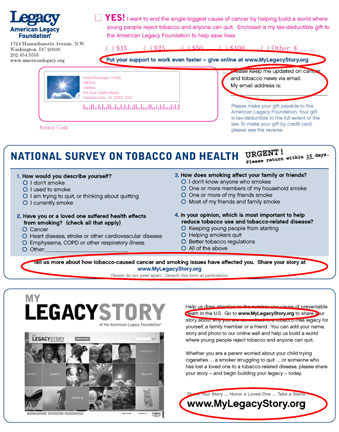 “Integration” has been a buzz word in membership development for over a decade, and if last week’s DMA Nonprofit Conference is any indication, it shows no sign of going anywhere any time soon.
“Integration” has been a buzz word in membership development for over a decade, and if last week’s DMA Nonprofit Conference is any indication, it shows no sign of going anywhere any time soon.
Ten, fifteen, years ago, integration was about coordinating the relatively limited range of constituency building instruments at our disposal to optimal effect. It meant bolstering a direct mail campaign with an advance telemarketing effort and vice versa. Or testing the placement of a TM effort in a multi-part DM membership renewal series. And when email arrived on the scene, it came to mean a much more multidimensional mix of DM-TM-EM direct response communications.
Today with social media a given, albeit evolving, part of our constituency building programs, and with the rapid rise of text as an important mobilization and fundraising tool (as of Friday, the American Red Cross had raised $30 million via mobile toward Haiti relief) “integration” has taken on a whole new meaning.
It’s no longer just about our Membership Department learning how to use the tools and get them to work together. Today, integration is about something even more complex: getting people to work together.
Gone are the days of Membership here, Marketing/Communications over there, Online down the hall, and Program on the fourth floor. As we’re all reaching into the same toolbox for instruments to enact our missions, where one department ends and another begins suddenly isn’t quite so clear any more. And so nonprofits – even the really big ones you’d think would have it all figured out – are left scratching their heads as to how to get Membership, MarComm, Online and Program to sit at the same table, not to mention puzzling where everyone should sit.
Who owns the database? Who owns the website? Who owns the communications calendar?
One VP of Online Services offered some possible answers at last week’s conference, by presenting several models for departmental integration. Not surprisingly, the speaker’s preferred model featured the Online Department as the spoke in the multi-departmental wheel, and the ultimate owner of the website.
Also no surprise: I couldn’t disagree more. Obviously, the hub should be Membership. And no doubt, there are dozens of Communications VP’s and Program Directors who will disagree just as vehemently with me.
While the debate will surely continue for at least a few more conference cycles, the good news, the real news – over text, social media, and whatever the next big thing may be – is that we understand now how critically important it is for our departments to come together. Real integration isn’t merely clever integration of our constituency building tools; it’s getting our departments and people to sit at the same table. It’s also fostering the imagination and open-mindedness to reach across it with “what if?”
So as we struggle with how to do that, what if … we stopped asking which department “owns” the website? Or who owns the Twitter account? What if we stopped asking who owns the Facebook page, or any of the tools we use to enact our missions for that matter?
What if we approached the puzzle of integrating our departments by challenging ourselves with a new, far more relevant, question: who owns our organization? And then let’s go from there.




 Statisticians are equipped with a broad range of detailed tests and tightly controlled procedures to determine the probability of an outcome.
Statisticians are equipped with a broad range of detailed tests and tightly controlled procedures to determine the probability of an outcome. No matter what your organization’s fiscal year is, the beginning of a new calendar year is like returning to “Go” in your donor communications. It marks a reset of your Annual Fund or membership program and the beginning of a new dialogue with your donors that will build over the coming months and culminate with your year-end campaigns.
No matter what your organization’s fiscal year is, the beginning of a new calendar year is like returning to “Go” in your donor communications. It marks a reset of your Annual Fund or membership program and the beginning of a new dialogue with your donors that will build over the coming months and culminate with your year-end campaigns. Good development professionals put a lot of time and effort into creating points of entry for prospective donors to their organizations. You may be familiar with this strategy from Terry Axelrod’s
Good development professionals put a lot of time and effort into creating points of entry for prospective donors to their organizations. You may be familiar with this strategy from Terry Axelrod’s  With Labor Day behind us, it’s officially crunch time for all of us involved in nonprofit development. We have year-end appeals to produce, annual reports to mail, goals to meet and – if we’re real gluttons for punishment – galas to manage.
With Labor Day behind us, it’s officially crunch time for all of us involved in nonprofit development. We have year-end appeals to produce, annual reports to mail, goals to meet and – if we’re real gluttons for punishment – galas to manage. Let me just begin by clearing something up. Direct mail fundraising is not dead. (Here’s
Let me just begin by clearing something up. Direct mail fundraising is not dead. (Here’s 
 In June, Target Analytics released its
In June, Target Analytics released its 



